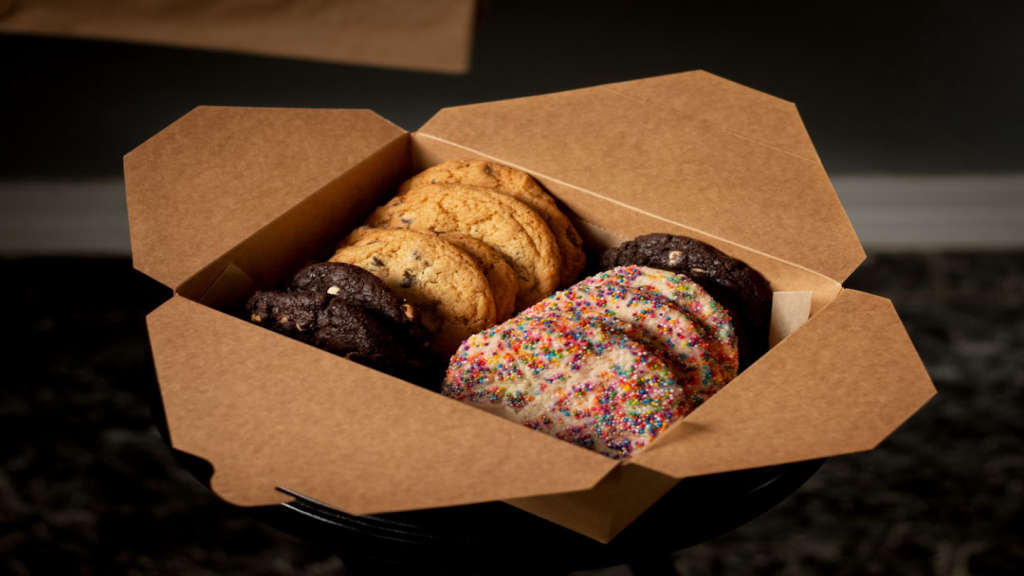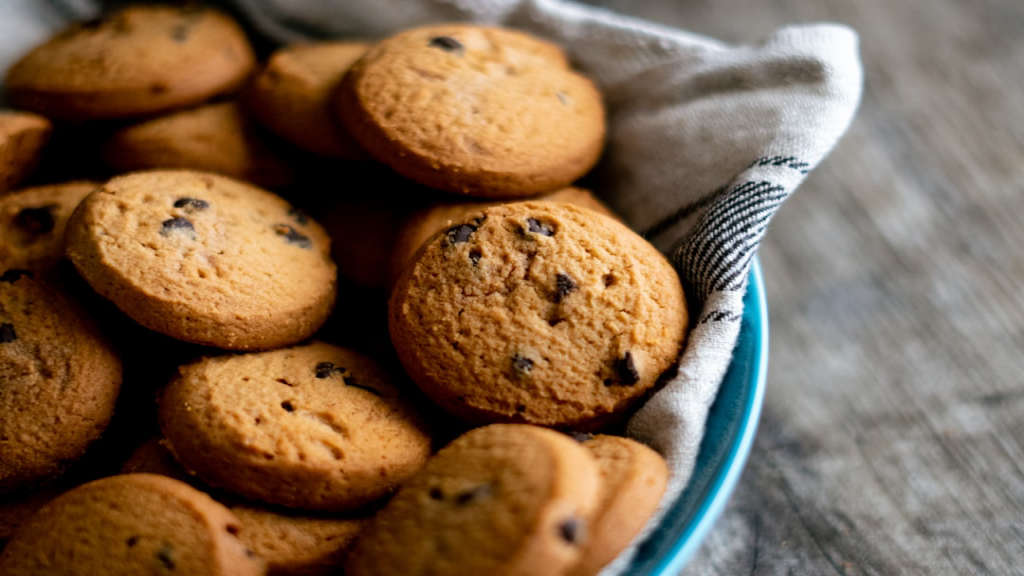When it comes to baking the perfect cookie, there are a few key ingredients and factors that come into play. From the richness of butter to the moisture of oil, and the indulgent texture to the quality of ingredients, each element contributes to creating the ultimate cookie experience. Achieving the ideal balance of these components is essential for producing cookies that are both delicious and memorable.
Main Points:
- The importance of quality butter in cookie baking
- Understanding the role of oil in cookie texture
- Creating the perfect texture for your cookies
- The impact of high quality ingredients on cookie flavor
The Chemistry of Cookie Dough: Understanding the Role of Ingredients
Cookie dough is a delightful mixture of ingredients that come together to create a delicious treat. Each ingredient in the recipe plays a crucial role to achieve the perfect texture and taste. Understanding the chemistry behind these ingredients can help you become a master cookie maker. Let’s take a closer look at the key components of cookie dough:
Cookie Ingredients List:
- Flour: This provides structure to the dough and helps hold everything together.
- Sugar: Aside from sweetness, sugar also affects the texture, color, and spread of the cookies.
- Butter: Adds flavor and helps create a soft and tender cookie.
- Eggs: Provide moisture and act as a binding agent.
- Baking Soda/Powder: These leavening agents help the cookies rise and create a soft texture.
- Salt: Balances the sweetness and enhances the overall flavor.
- Vanilla Extract: Adds a wonderful aroma and flavor to the dough.
Best Cookie Ingredients:
When choosing ingredients for your cookie dough, opt for high-quality options like pure vanilla extract, unsalted butter, and fresh eggs. These will elevate the flavor and texture of your cookies.
Cookie Ingredients to Avoid:
Avoid using margarine, imitation vanilla flavoring, and expired ingredients as they can negatively affect the taste and overall quality of your cookies.
Flavors Galore: Exploring the Impact of Sweeteners and Flavorings on Cookie Taste
When it comes to baking cookies, the choice of sweeteners and flavorings can have a significant impact on the overall taste of the final product. From classic chocolate chip cookies to healthy oatmeal raisin treats, the cookie ingredients for baking play a crucial role in determining the flavor profile.
Using healthy cookie ingredients such as natural sweeteners like honey or maple syrup can result in a more wholesome and nutritious cookie. On the other hand, experimenting with different flavorings such as vanilla extract, cinnamon, or citrus zest can add a unique twist to traditional recipes.
The Table of Cookie Ingredients:
| Type of Ingredient | Impact on Taste |
|---|---|
| Natural Sweeteners | Enhances the depth of flavor |
| Flavor Extracts | Adds unique and aromatic notes |
| Spices and Herbs | Infuses complexity and warmth |
By understanding the impact of simple cookie ingredients on taste, bakers can unleash a world of flavors and create delightful treats that cater to a variety of preferences.
The Magic of Leavening Agents: Investigating the Role of Baking Powder and Baking Soda
When it comes to creating mouth-watering desserts and baked goods, the secret lies in the art of leavening. The cookie ingredients used in recipes play a crucial role in achieving the perfect texture and flavor. Two key players in this process are baking powder and baking soda.
Baking powder and baking soda are both leavening agents that are essential for achieving light, airy texture in baked goods. While they may seem similar, they actually function quite differently in recipes. Baking powder is a complete leavening agent on its own, containing both an acid and a base to create carbon dioxide bubbles that cause the dough or batter to rise. On the other hand, baking soda requires an additional acidic ingredient, such as buttermilk or yogurt, to activate its leavening properties.
Understanding the roles of baking powder and baking soda is crucial for achieving the perfect balance of flavor and texture in your baked goods. Experimenting with different ratios and combinations of these leavening agents can lead to delightful discoveries in the world of baking.
In conclusion,
The magic of leavening agents, specifically baking powder and baking soda, cannot be overstated in the world of baking. By understanding their unique roles and experimenting with their combinations, bakers can unlock a world of culinary possibilities and create delectable treats that are sure to impress.
The Science of Crispy vs. Chewy: Unraveling the Secrets of Cookie Texture
When it comes to the perfect cookie, texture is everything. Whether you prefer a crispy bite or a chewy center, the science behind achieving that ideal texture is a fascinating subject. Understanding the chemistry and physics of baking can unlock the secrets to creating the perfect cookie.
The Role of Ingredients
One of the key factors in determining cookie texture is the composition of ingredients. For example, using a higher proportion of brown sugar to white sugar can result in a more chewy texture, while increasing the amount of butter can lead to a crispier cookie.
The Baking Process
The way a cookie is baked also plays a crucial role in its texture. Temperature and time are essential factors to consider. Baking at a higher temperature for a shorter period of time can create a crispier cookie, while a lower temperature and longer bake time can result in a chewier texture.
The Importance of Moisture
Managing the moisture content in a cookie dough is another important aspect of achieving the desired texture. The presence of moisture affects the way cookies spread and bake, ultimately influencing their crispness or chewiness.
The Perfect Balance
Finding the perfect balance between ingredients, baking techniques, and moisture levels is the key to unlocking the secrets of cookie texture. By understanding the science behind the crispy vs. chewy debate, bakers can take their cookie game to the next level.
The Role of Fat in Flavor and Texture: A Closer Look at Butter, Oil, and Shortening
When it comes to creating delicious and satisfying dishes, the role of fat cannot be overlooked. The type of fat used can greatly impact the flavor and texture of a dish. From the rich and creamy taste of butter to the subtle and clean flavor of oil, each fat brings its own unique characteristics to the table.
Butter:
Butter is beloved for its rich and indulgent flavor, as well as its ability to create a tender texture in baked goods. Its high fat content also adds a luxurious mouthfeel to dishes, making it a staple in both sweet and savory recipes.
Oil:
Oil, on the other hand, offers a neutral flavor profile that allows the other ingredients in a dish to shine. Its ability to coat ingredients evenly also contributes to a satisfying mouthfeel, making it a popular choice for frying, sautéing, and dressing salads.
Shortening:
Shortening, with its high melting point, is often used in baking to create flaky and tender pastries. Its lack of water content also contributes to a light and delicate texture in baked goods, making it a go-to for pie crusts and biscuits.
In conclusion, the type of fat used in cooking and baking plays a crucial role in determining the flavor and texture of a dish. Whether it’s the rich and creamy taste of butter, the neutral profile of oil, or the flaky texture of shortening, fats significantly impact the overall culinary experience.
From Oven to Table: The Impact of Baking Temperatures and Techniques on Cookie Quality
Baking temperatures and techniques play a crucial role in determining the quality of the cookies that come out of the oven. The way in which heat is distributed during the baking process directly impacts the texture, flavor, and overall appeal of the final product. It is essential to understand the effects of different temperatures and techniques on cookie quality in order to achieve the desired results.
Understanding the Impact of Baking Temperatures
When it comes to baking cookies, the temperature at which they are baked can make a significant difference in the outcome. Baking at higher temperatures typically results in cookies that are crispy on the outside and chewy on the inside, while lower temperatures yield softer, cake-like cookies. It is important to consider the desired texture and adjust the baking temperature accordingly.
The Role of Baking Techniques
In addition to temperature, baking techniques such as chilling the dough, using a convection oven, or rotating the baking sheets can also influence cookie quality. Chilling the dough before baking can prevent excessive spreading, resulting in thicker, more uniform cookies. Using a convection oven can promote even browning and a crispier texture. Similarly, rotating the baking sheets halfway through the baking process ensures that the cookies are baked evenly.
It is evident that the impact of baking temperatures and techniques on cookie quality is multifaceted. By understanding the science behind these factors, bakers can achieve the perfect balance of texture, flavor, and appearance in their cookies. Whether it’s a classic chocolate chip or a delicate sugar cookie, the right baking approach can elevate the overall quality of the final product.
Conclusion
In conclusion, the perfect cookie requires a balance of butter and oil to achieve the ideal texture and quality. The combination of these ingredients creates a delicious and decadent treat that is sure to satisfy any sweet tooth. Experimenting with different ratios of butter and oil can lead to a variety of cookie textures, from crispy to chewy. Ultimately, the key to perfect cookies lies in using high-quality ingredients and paying close attention to the texture of the dough. Happy baking!
Frequently Asked Questions
What ingredients are commonly used to make cookies?
Common ingredients used to make cookies include flour, sugar, butter, eggs, and baking soda/powder. Additional ingredients such as chocolate chips, nuts, and flavorings are also often included.
How can I make cookies without using eggs?
You can make cookies without using eggs by using substitutes such as applesauce, mashed bananas, or commercial egg replacers. These alternatives can help bind the ingredients together and provide moisture without the need for eggs.
What is the best way to store freshly baked cookies?
To keep freshly baked cookies at their best, store them in an airtight container at room temperature. Adding a slice of bread to the container can help keep the cookies soft and chewy. If you need to store them for a longer period, freezing the cookies in airtight containers or freezer bags is also a good option.


